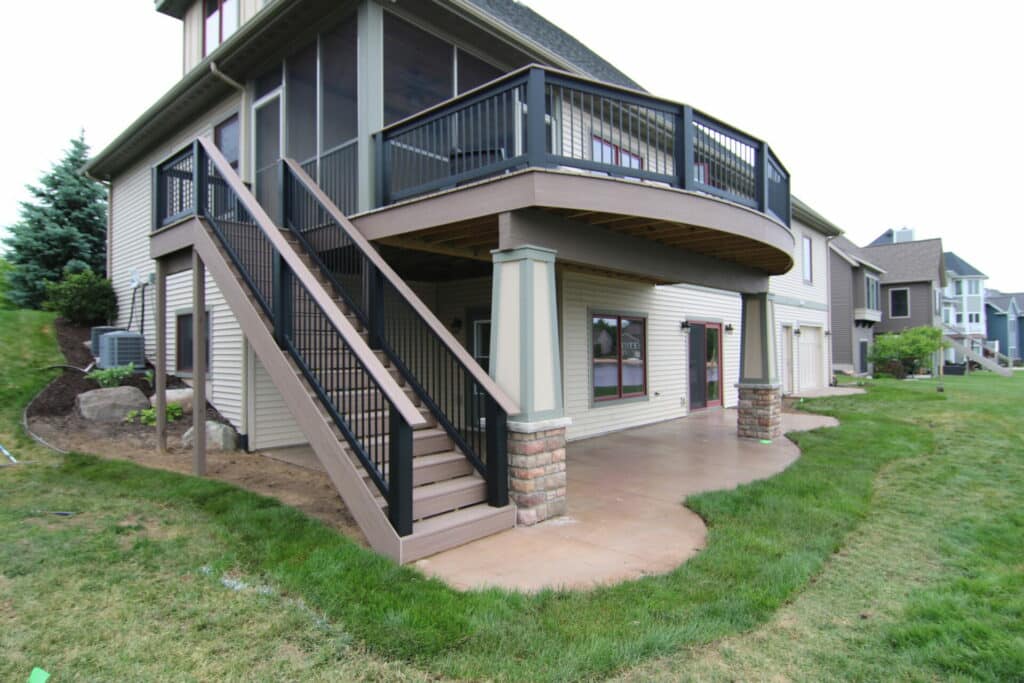Pressure Treated Wood Decks
Pressure-treated wood decks offer a practical and affordable way to enjoy outdoor living spaces. Designed to resist rot, decay, and insect damage, these decks combine durability with a natural wood look.
Homeowners in the Greater Grand Rapids area are choosing pressure-treated wood as a budget-friendly option for creating functional and inviting outdoor spaces. Precision Decks & Patios builds decks that fit your lifestyle while maximizing value.
Treated Wood is Manufactured
Pressure-treated wood undergoes a specialized process to enhance its durability and resistance to outdoor threats. The process begins by placing the wood in a high-pressure chamber, where preservatives like copper arsenate are forced deep into the wood fibers. These chemical treatments create a robust barrier against fungal decay, moisture, and insect damage.
The preservatives bond with the wood at a cellular level, ensuring long-lasting protection even in harsh weather conditions. Popular choices like Southern Yellow Pine and Douglas Fir are used for their structural strength and ability to absorb treatments effectively, making them ideal for outdoor decking projects.
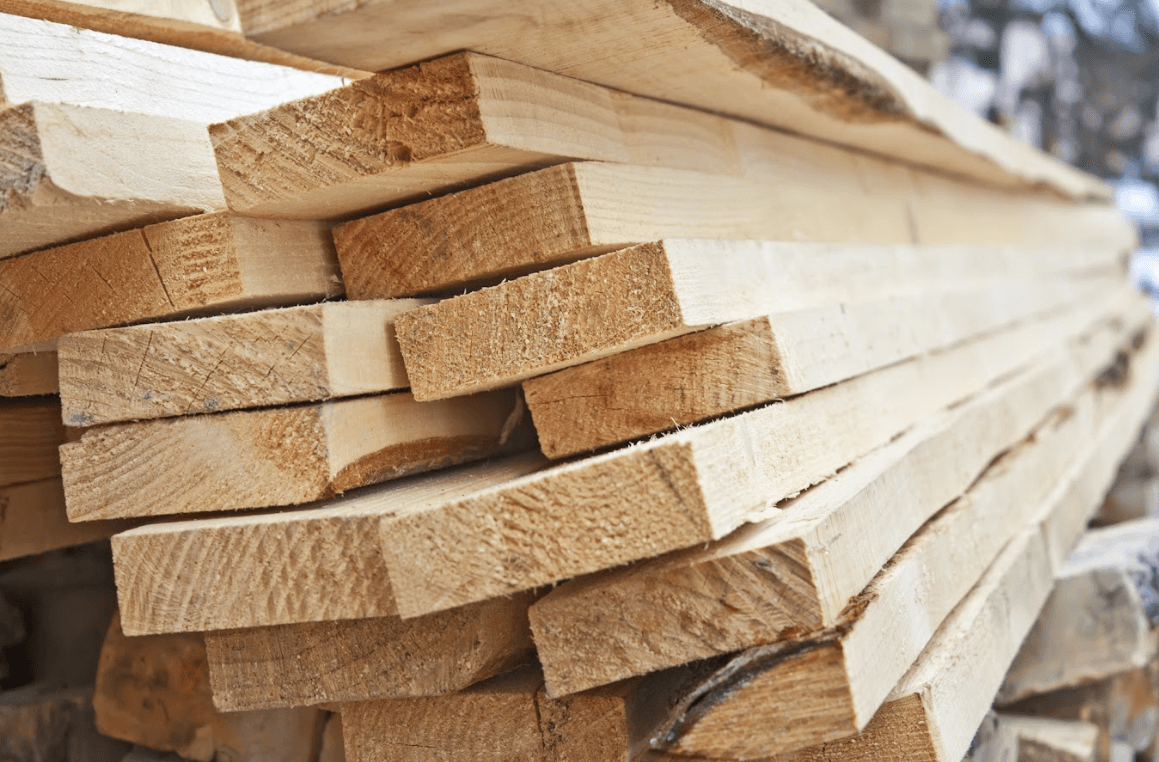
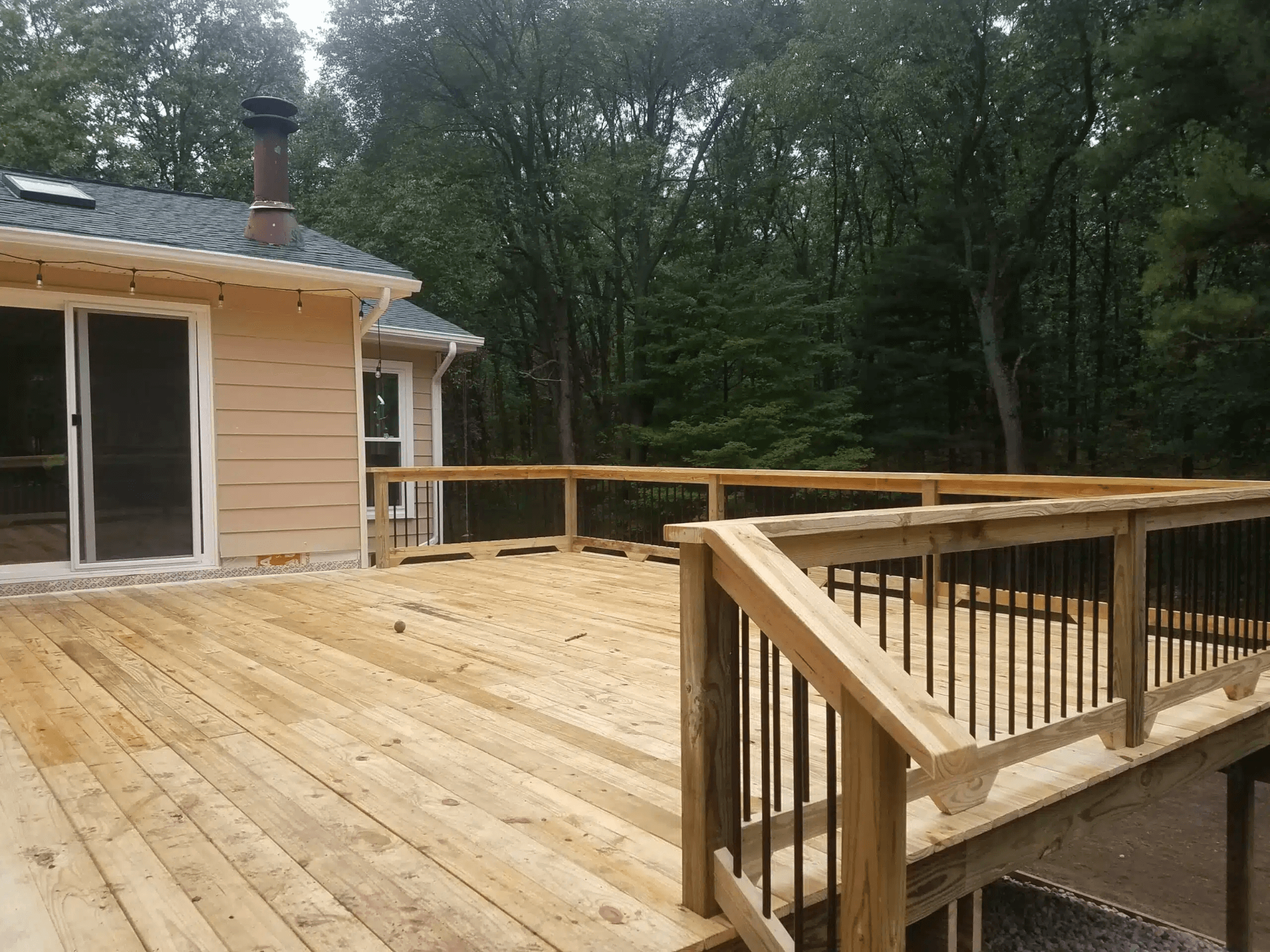
Treated Wood Decks
Pressure-treated wood decks offer an affordable and dependable solution for homeowners. They combine durability with design flexibility, making them ideal for outdoor spaces.
- Resistance to Decay and Pests: Treated with wood preservatives, this material protects against rot, mold, and insect damage. Its durability makes it reliable for high-moisture environments like backyards and poolside areas.
- Ground Contact Durability: Ground-contact pressure-treated wood is engineered to withstand continuous exposure to soil and moisture. This makes it ideal for projects where direct contact with the ground is unavoidable.
- Design Flexibility: Pressure-treated wood supports various deck layouts, including single-level, multi-level, and built-in features like planters and seating. This versatility lets you design a deck that fits your space and lifestyle.
- Customizable Finishes: Easily stain or paint pressure-treated wood to match your home’s aesthetic. These finishes also enhance the wood’s resistance to weather and wear.
Treated Wood vs. Untreated Wood for Decks
- Durability: Pressure-treated wood is resistant to rot, insects, and decay, while untreated wood is prone to rapid deterioration in outdoor conditions.
- Lifespan: Untreated wood may last only a few years outdoors, whereas pressure-treated wood can endure for decades with proper care.
- Maintenance Needs: Untreated wood requires more frequent repairs and replacements, while pressure-treated wood demands less upkeep and remains structurally sound longer.
- Cost Considerations: While pressure-treated wood has a slightly higher upfront cost, it offers better long-term value by reducing maintenance and replacement expenses.
- Suitability for Outdoor Use: Untreated wood is not designed to withstand harsh weather, which we know very well in the Grand Rapids area, making pressure-treated wood the clear choice for outdoor decking projects.
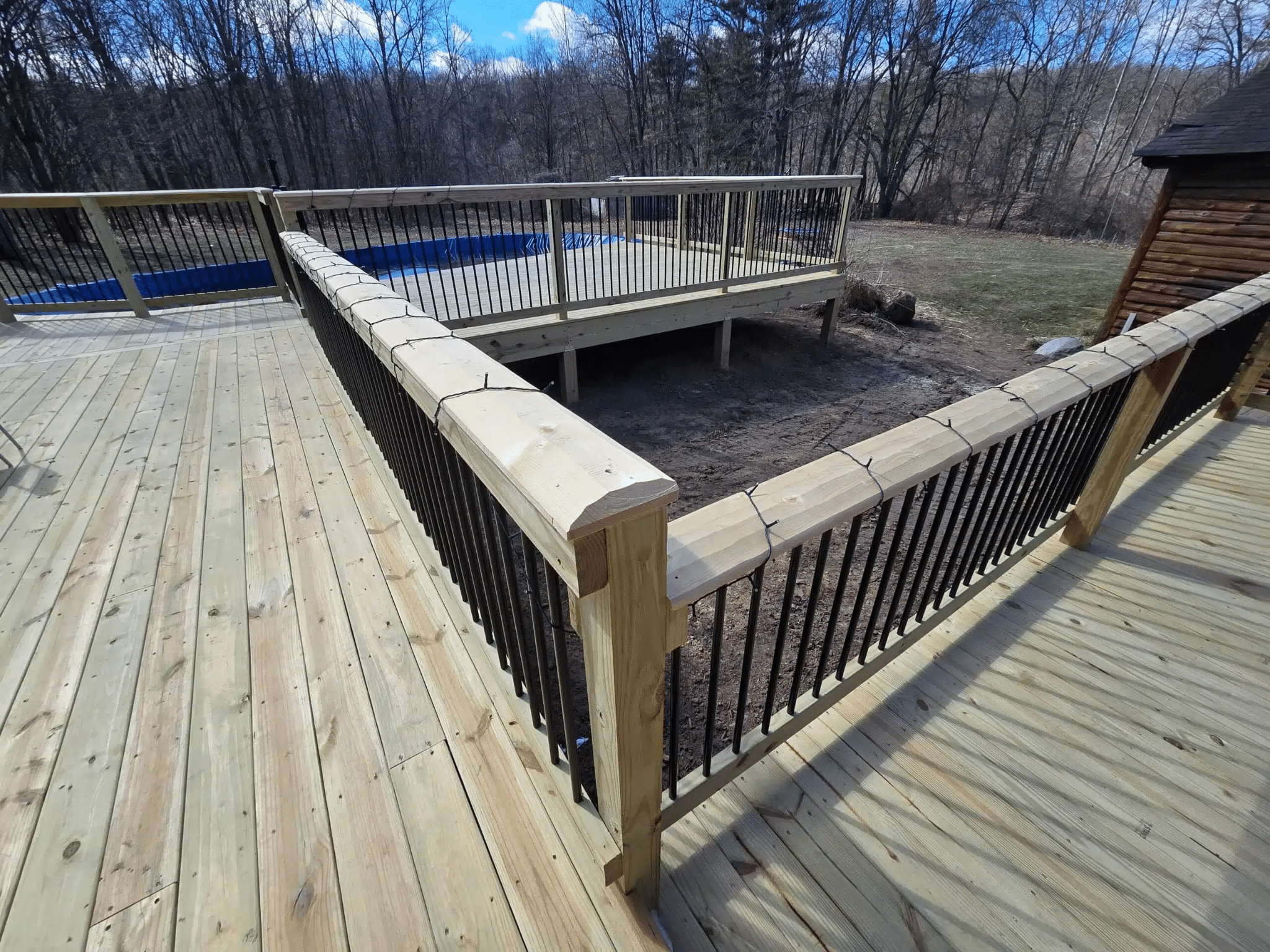
Treated Decking vs. Composite Decking
Pressure-treated and composite deck boards offer distinct advantages, making it essential to weigh the pros and cons of your backyard deck. Wood products and composite lumber each shine in specific areas, from budget to maintenance and longevity.
- Cost Comparison: Pressure-treated wood is significantly more affordable upfront, making it ideal for budget-conscious homeowners. Composite decking comes with a higher initial cost but may save money over time due to reduced maintenance needs.
- Maintenance Needs: Pressure-treated wood requires regular sealing and staining to protect against the elements. Composite decking is low maintenance, and it needs only occasional cleaning to stay in excellent condition.
- Durability and Lifespan: Treated wood can last 10-15 years with proper care, while composite materials often last 25 years or more. Composite is more resistant to fading, cracking, and weather damage over time.
- Aesthetic Options: Pressure-treated boards offer the natural beauty of real wood with the option to customize stains or finishes. Composite decking provides a consistent look, even the appearance of wood grains, and comes in a variety of colors and textures.
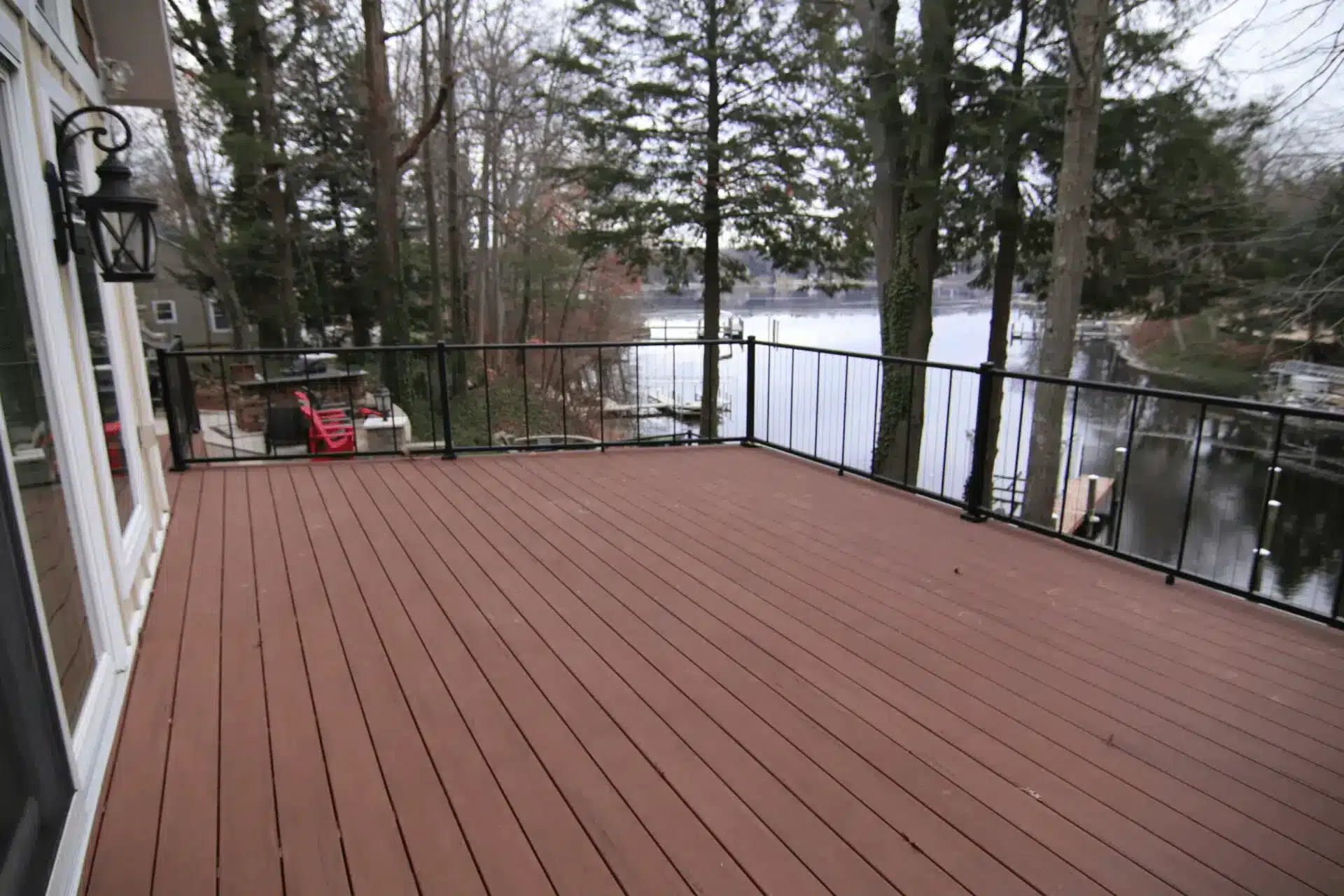
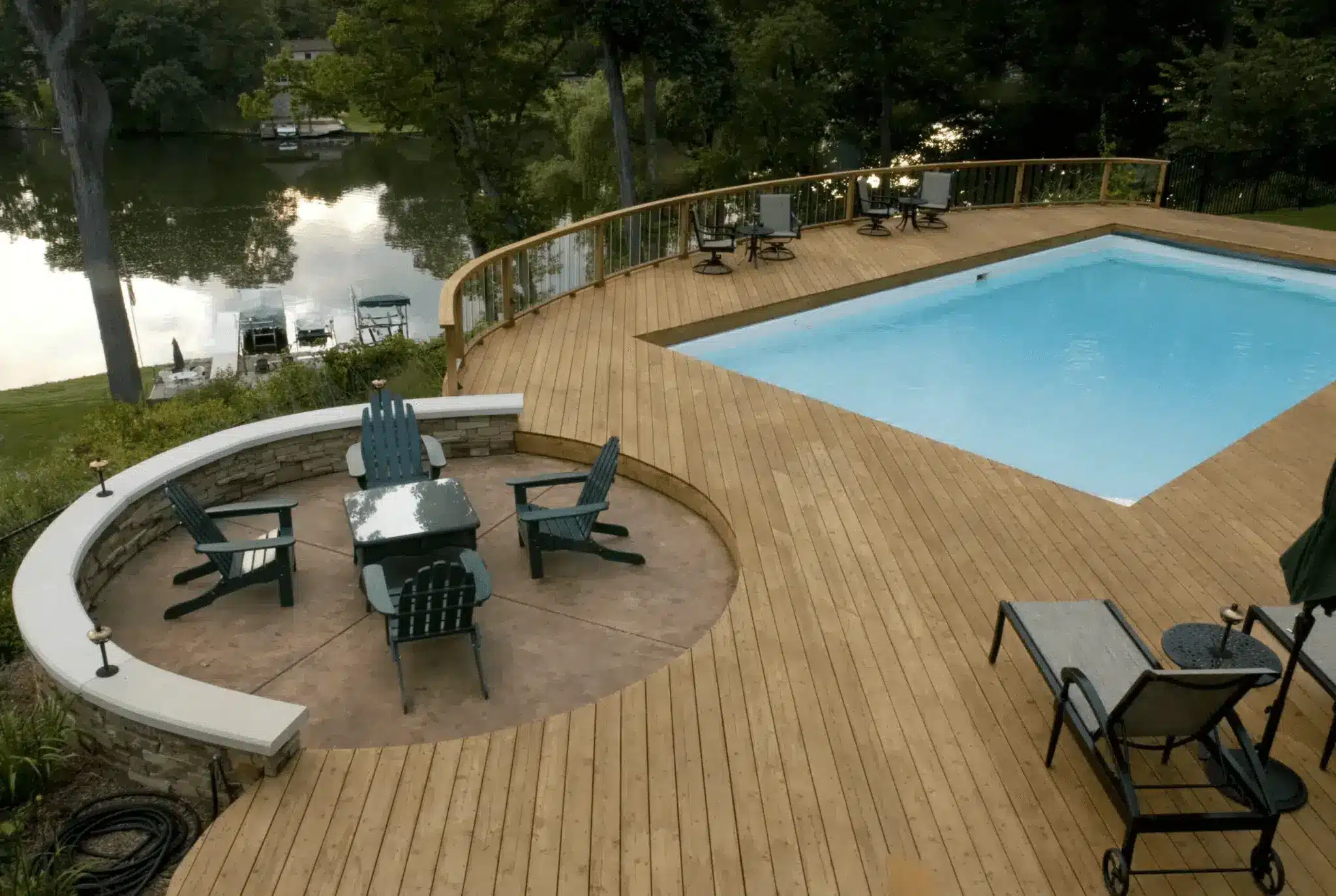
with Pressure-Treated Wood
Pressure-treated wood offers endless options for crafting a deck that suits your home and lifestyle. Its versatility makes it a top choice for homeowners who want a customized outdoor space that is both functional and visually appealing.
- Flexible Layouts: From simple single-level platforms to intricate multi-tiered designs, pressure-treated wood works for a variety of deck configurations. This adaptability makes it ideal for small yards or expansive outdoor spaces.
- Custom Features: Add built-in seating, pergolas, or planter boxes to enhance functionality and style. These features turn your deck into a personalized retreat that meets your specific needs.
- Architectural Elements: Incorporate custom railings, staircases, and privacy screens to elevate safety and aesthetics. These additions make the deck more user-friendly and visually cohesive with your home.
- Color and Finish Options: Easily stain or paint pressure-treated wood to achieve the look you want. Choose from various finishes to match your home’s exterior while providing added protection against the elements.
How to Maintain Pressure-Treated Wood Decks
- Seal and Stain Regularly: Apply a high-quality sealant or stain every 1-2 years to protect the wood from moisture and UV damage. Transparent or semi-transparent stains work well to highlight the natural grain.
- Keep It Clean: Sweep off debris like leaves and dirt regularly, as trapped moisture can lead to mildew growth. Wash the deck with a mild detergent and water at least once a year to maintain its appearance.
- Inspect for Physical Damage: Check for cracks, splinters, or loose boards periodically. Address small issues promptly to prevent them from worsening over time.
- Avoid Prolonged Moisture Exposure: Place mats or trays under planters to avoid water pooling and the absorption of water on the surface. Ensure proper drainage around the deck to prevent water from collecting underneath.
- Be Careful with Pressure Washing: Use a low-pressure setting to avoid scarring the wood. Follow up with a sealant application to restore the deck’s protective barrier.
Your Affordable Deck Solution Awaits in Greater Grand Rapids
Pressure-treated wood decks offer the perfect combination of affordability, durability, and versatility for your outdoor living space. Precision Decks & Patios is here to bring your vision to life, creating a space you’ll love for years to come. If you’re ready to start your project in the Greater Grand Rapids area, contact us today to schedule a free design consultation!

